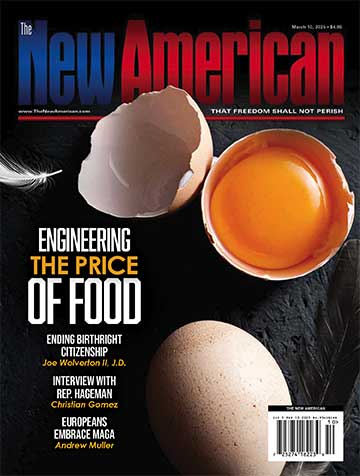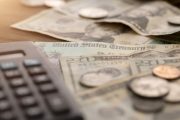
Now that Joe Biden’s “victory tour” touting his Bidenomics program is over, the fog it created can be blown away: Americans, especially the targeted middle class (those making between $50,000 and $150,000 a year), are now significantly worse off.
Prices have increased by nearly 17 percent since Biden ascended to the Oval Office, while real (inflation-adjusted) wages have fallen by four percent. And interest rates are at their highest level in 22 years.
That’s causing credit card debt to rise — along with defaults. And with a record $1 trillion in credit card debt — a new unhappy record — being reached last month, those defaults will continue to increase as interest rates rise. Credit card delinquency has increased in each of the past seven quarters, and is now higher than it was before Covid. Auto-loan delinquencies in the second quarter of this year topped pre-pandemic levels.
With 30-year mortgage rates exceeding seven percent, the housing market and the new- and used-vehicle markets are slowing as a result.
Even CNN, the mouthpiece for the Left, reported earlier this month that “the economy is still in a downturn and conditions are continuing to worsen.”
The Census Bureau’s latest “Household Pulse Survey” revealed that, because of Biden’s stimulus plan, funded by money created by the Federal Reserve, the number of Americans having “difficulty paying for [their] usual household expenses” has leapt by eight percent, with one in three having difficulty keeping up with Biden’s inflation.
The survey measured inflation by pricing the cost of a grocery basket of items in January 2019 and then comparing those same items to today. What cost $200 back then now costs $243. Unfortunately, the Census Bureau is using the flawed numbers provided by another government agency, the Bureau of Labor Statistics, so the real, inflation-adjusted cost of that grocery cart is likely closer to $300.
The average price of a gallon of milk has increased by nearly 25 percent, while the cost of gas is up more than 50 percent under Biden. The average cost of a home has increased by a third.
So much for the numbers. Fitch Ratings can’t ignore the “elephant in the living room” — the national debt — and accordingly, although belatedly, has dropped the nation’s credit rating, albeit modestly.
For the record, Bidenomics consists of three separate spending packages, all of which are funded by taxpayers or through the degradation of the value of the currency by inflating it. Joe Biden describes the package as “where we make smart investments in America, educate and empower American workers, and promote competition to lower costs and help small businesses.”
Each is a lie. The government has no money of its own (except what the Federal Reserve creates). It only has what it takes from taxpayers. So when a “smart investment” is made, Biden is overriding a decision that the economy would make on its own if left alone. It’s automatically a malinvestment.
Example: Biden’s favorite “green energy” company, Proterra, was going to “end up owning the future” according to him. Last week Proterra declared bankruptcy, costing investors who bought the lie millions, not to mention the taxpayer funds that disappeared into that black hole of malinvestment.
The only way to “empower American workers,” if he really intended to do so, would be to cut regulations and rein in government spending to preserve the value of the currency. And the only way to “promote competition to lower costs” is to get government out of the way and let the free market do what it does best: properly allocate limited capital to places where it is treated the best.
The fraud and myth of Bidenomics isn’t fooling the American people. At RealClearPolitics, nearly 60 percent of those polled disapprove of Biden’s economic policies, while almost two out of three disapprove of his inflation-fighting efforts.




